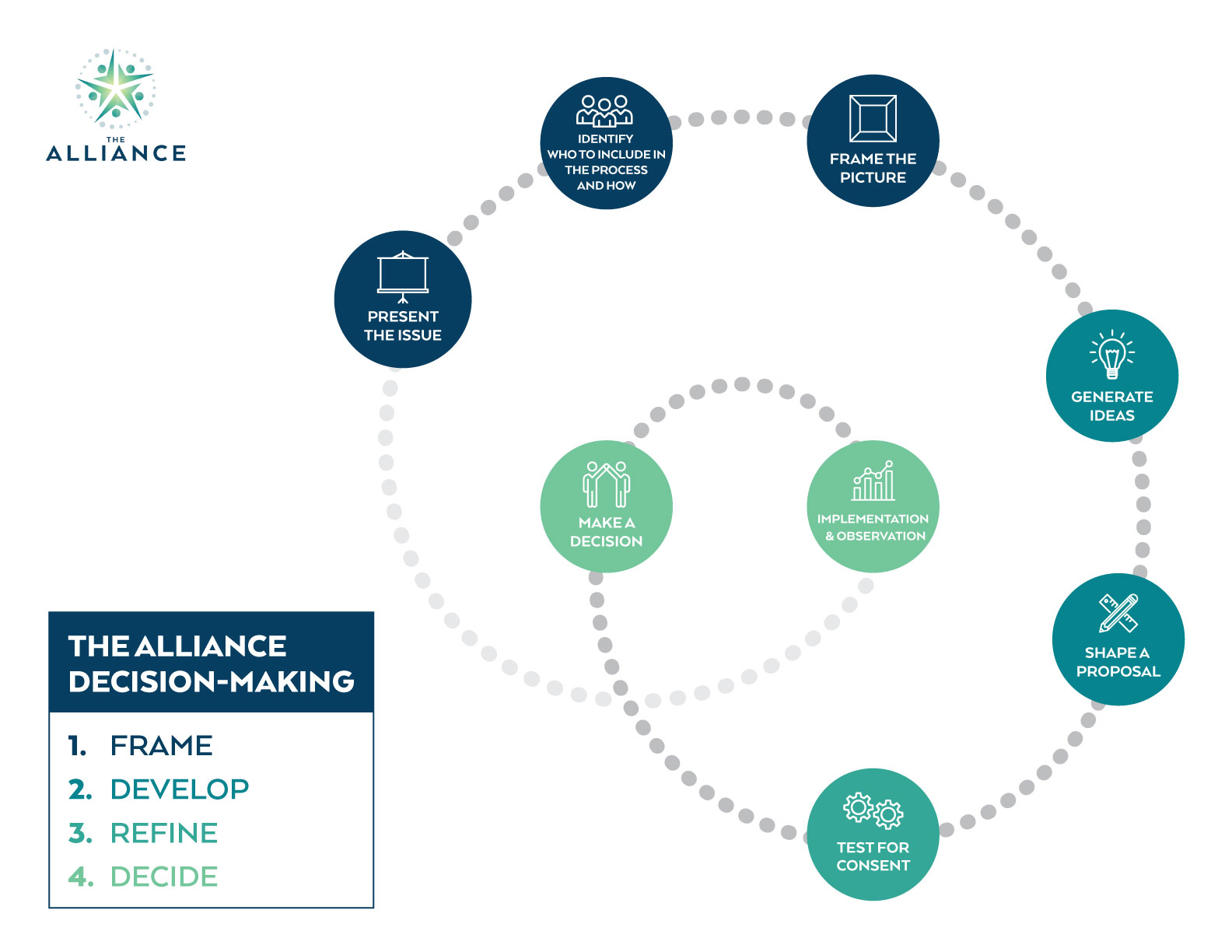Principle of Consent & Decision-Making
What is the principle of consent?
The Alliance makes most decisions using the principle of consent. The consent principle means that a decision has been made when no one who is a part of the decision-making group has any significant objection or when no one can identify a risk that the group cannot afford to take. When participants state an objection, typically it involves conflicts with the network’s purpose, strategies, or the creation of conditions that would make it very difficult for a participant to perform his or her role. Under those conditions, the group or person would be “out of their range of tolerance” in supporting the choice as stated. Creating spaces where all people feel welcome to state objections requires relational trust.
This difference of opinion creates an opportunity for dialogue: to inquire about and gain an understanding of the reasoning behind the objection, and through that process find solutions to generate more choices, address the objection, and bring the group back within its range of tolerance.

Consent in Practice:
Our network is learning what consent-based decision-making means in practice. We aren’t experts in consent; we’ve just made a commitment to using it, even when it’s difficult or messy. There are some tips we’ve learned along the way:
- Members who are holding an objection are encouraged to share that objection. For us, objection is treasure! It makes the ultimate decision stronger when we have assessed all possible risks and value the experiences of the people in the room.
- We commit to slowing down to make space for people to sense into their objections. Systems of harm and trauma mean that we sometimes have a hard time understanding how we feel in our bodies. We embody the choices we’re making and move forward together.
- Consent isn’t consensus. We aren’t trying to convince others of our perceived best idea or path. We commit to deep listening, so we can hear the wise ideas of others.
- There is no perfect path forward. We make decisions within our range of tolerance that are good enough for now, safe enough to try.
Alliance Decision-Making Protocol
Decisions imply power. Who makes a decision tells who has the authority in a group. Often, decision-makers are not part of the group that decisions are being made for. Alliance community stakeholders devoted many hours to developing this values-driven, dynamic tool to sustain a network culture that honors equity and shares power. As a consent-based protocol, it reinforces a commitment to engagement and trust among participants who are impacted by the decisions being made.
The decision-making protocol and steps are outlined in the graphic and expanded on in the info sheet linked below.

